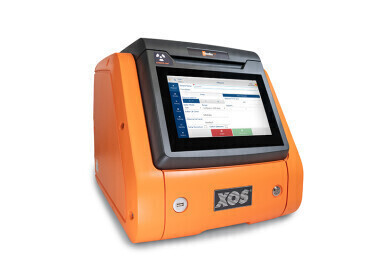Fuel analysis
Enhanced precision in biofuel analysis
Dec 18 2023
Biofuels, sourced from renewable raw materials such as vegetable oil, animal fat, and recycled resources such as used cooking oil, play a pivotal role in advancing sustainable energy solutions. While traditionally blended with conventional fuels like gasoil and gasoline, biofuels are increasingly finding applications in other processes such as aviation and marine fuel production.
Accurate measurement of biofuels poses challenges, especially when determining sulphur values in blends with a specified maximum sulphur content. A notable complication arises from the higher oxygen concentration in biofuel samples compared to traditional fuels, disrupting typically straightforward X-ray Fluorescence (XRF) analysis, and potentially leading to misleading sulphur and chlorine concentration readings.
To address these challenges associated with renewable materials, a thorough study utilised XOS’ Sindie +Cl, a cutting-edge XRF instrument designed for comprehensive sulphur and chlorine measurement in biofuels. Correction factors, derived from the ASTM D7039 method, were strategically applied to neutralise oxygen interference, ensuring precise and reliable results. Sindie +Cl offers unparalleled advantages in biofuel analysis, including rapid and accurate testing, non-destructive analysis, and straightforward sample preparation. The main benefit is that the Sindie +Cl allows concurrent measurement of total sulphur and chlorine, streamlining the effective processing of incoming goods and quality certification of finished products.
In the experiment, diverse biofuel samples were selected, spanning B10 and B20 blends, gasoil, hydrotreated vegetable oil (HVO), rapeseed methyl ester (RME), soybean methyl ester (SME), tallow methyl ester (TME), and used cooking oil methyl ester (UCOME). Each sample underwent ten measurements under stringent repeatability conditions using Sindie +Cl, ensuring robust and consistent results.
The correction factors, tailored to Sindie +Cl’s analyser geometry, were derived from a mineral oil calibration curve. Notably, even samples like B10 and B20, which typically fall below the 3.7% oxygen threshold, were corrected. This approach becomes essential with the emergence of biofuel oils (BFO) containing higher biofuel concentrations, underscoring the instrument’s critical role in ensuring accurate measurement and certification.
In the dynamic landscape of biofuel certification, Sindie +Cl offers unparalleled precision and efficiency. By addressing oxygen interference through correction factors, this instrument streamlines the certification process, meeting regulatory standards and ensuring the accurate measurement of biofuel concentrations. Click here for the full article and data tables.
Digital Edition
PIN 26.1 Feb/Mar 2025
March 2025
Analytical Instrumentation - Elemental Analysis for Quality and Process Control at Refineries, for Lubricants and Wear Metals in Engine Oils - Synthetic Lubricants: New Developments - Scaling...
View all digital editions
Events
Apr 14 2025 Moscow, Russia
Apr 15 2025 Moscow, Russia
Apr 22 2025 Hammamet, Tunisia
Apr 22 2025 Kintex, South Korea
Solar & Energy Storage Summit 2025
Apr 23 2025 Denver, CO, USA



















